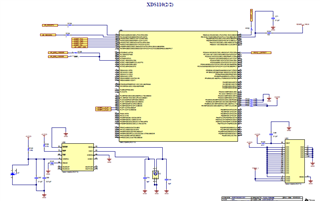I mount 'TM4C1294NCPDTT3' on the board, but the oscillator doesn't move.
Could you tell me the reason?
By the way, I wired like the below.
(i) 3.3 V power(without resistor)
Pin number:7, 16, 26, 28, 39, 39, 47, 51, 52, 69, 79, 90, 101, 113, 122, 8
(ii) 3.3 V power(via resistor)
・70 (via 10 kΩ resistor)
・9 (via 1 kΩ resistor)
・68 (via 51Ω resistor)
・60,61 (via 1 kΩ resistor)
(iii) GND(Without resistor)
Pin number:17, 48, 55, 58, 80, 114, 10, 66
(iv) GND(via resistor)
・59 (via 4.7 kΩ)
・62,63 (via 1 kΩ)
(vi)oscillator peripheral
・88 (8 pF and 16 MHz crystal)
・89 (8 pF and 16 MHz crystal)


